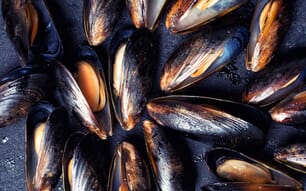The study, published this week in mBio®, the online open-access journal of the American Society for Microbiology, suggests that the virulent US fish epidemic emerged from an Asian source.
Since 2009, catfish farming in Alabama, Mississippi and Arkansas has been seriously impacted by an emerging strain of Aeromonas hydrophila, which causes Aeromonas septicemia in catfish. A serious infection that can cause death in as little as 12 hours, Aeromonas septicemia's clinical signs include skin lesions and blood loss.
Normally A. hydrophila, which can be found in both fresh and brackish water, only affects fish that are stressed or injured. But the newer strain has affected even apparently healthy fish with no obvious signs of duress, says senior study author Mark Liles, PhD, an associate professor in the Department of Biological Sciences at Auburn.
When initial tests of the diseased fish showed A. hydrophila was responsible, says Liles, scientists "didn't believe it at first, because the signs didn't match the more typical opportunistic infections in stressed fish that we associate with A. hydrophila." To date, disease outbreaks have been responsible for an estimated loss of more than $12 million in catfish aquaculture operations in the southeastern United States, he says.
Mr Liles and colleagues studied the molecular epidemiology of the epidemic-causing A. hydrophila to try to trace its evolution. They compared samples of the bacteria to 264 known Aeromonas strains in an international database. Only one virulent strain came close to matching the one sampled from Alabama: ZC1, isolated from a diseased grass carp in China's Guangdong Province. ZC1 was isolated from fish that had experienced an epidemic outbreak atypical of Aeromonas infections.
Researchers also identified a less aggressive related A. hydrophila strain called S04-690, taken in 2004 from a diseased catfish in a commercial aquaculture pond in Mississippi. That strain caused a serious Aeromonas septicemia outbreak that killed thousands of catfish but did not result in an epidemic on neighboring farms.
Next, the scientists evaluated the evolutionary relationships of additional Chinese carp bacteria samples from epidemics in the Hubei Province in China. This revealed that all of the Chinese carp bacteria samples, including ZC1, group together with the recent US epidemic samples of bacteria in catfish, suggesting that a common ancestor is responsible for the virulent A. hydrophila strains causing fish disease in both China and the United States. S04-690, from the Mississippi fish, also was found to be in the same group, related to both the US catfish and Asian carp bacteria. However, it was genetically distinct from the other two strains. By contrast, A. hydrophila strains that do not cause epidemics are more heterogeneous.
Additional experiments found that isolated bacteria from diseased catfish in America and diseased carp in China shared alternate forms of 10 key 'housekeeping' genes required for basic cellular function.
It's not clear how the bacterium was introduced in America, Mr Liles says. It could be from importing Asian carp to America for aquatic weed control, or from transporting ornamental fish or contaminated processed seafood products from Asia. The spread of disease among farms also is not fully understood but could result from birds that move from pond to pond eating catfish, or from harvesting equipment that may be insufficiently sanitised between uses.
Mr Liles and other researchers are investigating means to control the spread of illness, including developing vaccines against the bacteria, and using medicated feed and/or probiotics. Meanwhile, he says, US farmed catfish are safe to eat and pose no disease threat to humans due to strict standards regarding harvesting and processing of sick animals.



